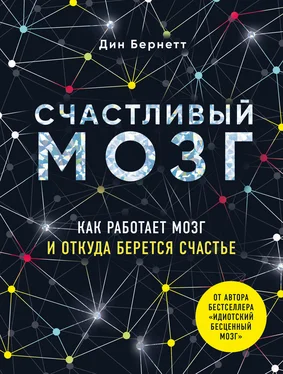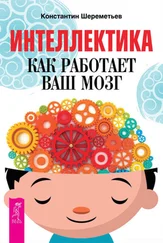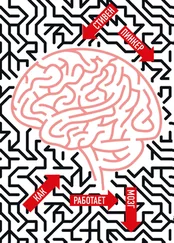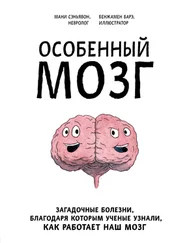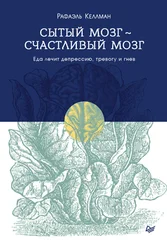Atkinson, J.W., Motivational determinants of risk-taking behavior. Psychological review, 1957. 64 (6p1): p. 359.
Samson, A.C. and J. J. Gross, Humour as emotion regulation: the differential consequences of negative versus positive humour. Cogn Emot, 2012. 26 (2): p. 375–84.
Gil, M., et al., Social reward: interactions with social status, social communication, aggression, and associated neural activation in the ventral tegmental area. Eur J Neurosci, 2013. 38 (2): p. 2308–18.
Goh, C. and M. Agius, The stress-vulnerability model how does stress impact on mental illness at the level of the brain and what are the consequences? Psychiatr Danub, 2010. 22 (2): p. 198–202.
Gelkopf, M., S. Kreitler, and M. Sigal, Laughter in a Psychiatric Ward: Somatic, Emotional, Social, and Clinical Influences on Schizophrenic Patients. The Journal of nervous and mental disease, 1993. 181 (5): p. 283–289.
Flett, G.L., K. R. Blankstein, and T. R. Martin, Procrastination, negative self-evaluation, and stress in depression and anxiety, in Procrastination and task avoidance. 1995, Springer: p. 137–167.
Sørensen, L.B., et al., Effect of sensory perception of foods on appetite and food intake: a review of studies on humans. International journal of obesity, 2003. 27 (10): p. 1152.
Myers Ernst, M. and L. H. Epstein, Habituation of responding for food in humans. Appetite, 2002. 38 (3): p. 224–34.
Brennan, P., H. Kaba, and E. B. Keverne, Olfactory recognition: a simple memory system. Science, 1990. 250 (4985): p. 1223–1226.
Maldarelli, C., Here’s Why Twin Studies Are So Important To Science And NASA, in Popular Science. 2016, @popsci: popsci.com.
Kendler, K.S., et al., A Swedish national twin study of lifetime major depression. Am J Psychiatry, 2006. 163 (1): p. 109–14.
Kensinger, E.A. and S. Corkin, Two routes to emotional memory: Distinct neural processes for valence and arousal. Proceedings of the National Academy of Sciences of the United States of America, 2004. 101 (9): p. 3310–3315.
Hoffmann, H., E. Janssen, and S. L. Turner, Classical conditioning of sexual arousal in women and men: effects of varying awareness and biological relevance of the conditioned stimulus. Arch Sex Behav, 2004. 33 (1): p. 43–53.
Dusenbury, L., et al., A review of research on fidelity of implementation: implications for drug abuse prevention in school settings. Health education research, 2003. 18 (2): p. 237–256.
Freeman, B., S. Chapman, and M. Rimmer, The case for the plain packaging of tobacco products. Addiction, 2008. 103 (4): p. 580–590.
Christiano, A. and A. Neimand, Stop Raising Awareness Already (SSIR). 2017: Stanford Social Innovation Review.
Marteau, T.M., G. J. Hollands, and P. C. Fletcher, Changing Human Behavior to Prevent Disease: The Importance of Targeting Automatic Processes. Science, 2012. 337 (6101): p. 1492.
Dolcos, F., K.S. LaBar, and R. Cabeza, Dissociable effects of arousal and valence on prefrontal activity indexing emotional evaluation and subsequent memory: an event-related fMRI study. Neuroimage, 2004. 23 (1): p. 64–74.
Volkow, N.D., G. – J. Wang, and R. D. Baler, Reward, dopamine and the control of food intake: implications for obesity. Trends in cognitive sciences, 2011. 15 (1): p. 37–46.
Petty, R.E. and P. Brinol, Attitude change. Advanced social psychology: The state of the science, 2010: p. 217–259.
Beck, J.G. and S. F. Coffey, Assessment and treatment of PTSD after a motor vehicle collision: Empirical findings and clinical observations. Professional psychology, research and practice, 2007. 38 (6): p. 629–639.
Clark, R.E. and L. R. Squire, Classical conditioning and brain systems: the role of awareness. Science, 1998. 280 (5360): p. 77–81.
Sharot, T., The optimism bias: A tour of the irrationally positive brain. 2011: Vintage.
Cummins, R.A. and H. Nistico, Maintaining Life Satisfaction: The Role of Positive Cognitive Bias. Journal of Happiness Studies, 2002. 3 (1): p. 37–69.
Sharot, T., et al., Neural mechanisms mediating optimism bias. Nature, 2007. 450 (7166): p. 102–105.
Koob, G.F. and M. Le Moal, Plasticity of reward neurocircuitry and the ‘dark side’ of drug addiction. Nat Neurosci, 2005. 8 (11): p. 1442–1444.
Arias-Carrion, O. and E. Poppel, Dopamine, learning, and reward-seeking behavior. Acta Neurobiol Exp (Wars), 2007. 67 (4): p. 481–8.
Koob, G.F. and M. Le Moal, Addiction and the brain antireward system. Annu Rev Psychol, 2008. 59: p. 29–53.
Gardner, E.L., Introduction: Addiction and Brain Reward and Anti-Reward Pathways. Advances in psychosomatic medicine, 2011. 30: p. 22–60.
Arató, M., et al., Elevated CSF CRF in suicide victims. Biological Psychiatry. 25 (3): p. 355–359.
Knoll, A.T. and W. A. Carlezon, Dynorphin, stress, and depression. Brain research, 2010. 1314C: p. 56.
Koob, G.F. and M. L. Moal, Drug Abuse: Hedonic Homeostatic Dysregulation. Science, 1997. 278 (5335): p. 52.
A tale of anxiety and reward – the role of stress and pleasure in addiction relapse, in The Brain Bank North West. 2014, @BrainBankManc: thebrainbank.scienceblog.com.
Michl, P., et al., Neurobiological underpinnings of shame and guilt: a pilot fMRI study. Social Cognitive and Affective Neuroscience, 2014. 9 (2): p. 150–157.
Chang, Luke J., et al., Triangulating the Neural, Psychological, and Economic Bases of Guilt Aversion. Neuron, 2011. 70 (3): p. 560–572.
Gilovich, T., V. H. Medvec, and K. Savitsky, The spotlight effect in social judgment: an egocentric bias in estimates of the salience of one’s own actions and appearance. Journal of personality and social psychology, 2000. 78 (2): p. 211.
Silani, G., et al., Right supramarginal gyrus is crucial to overcome emotional egocentricity bias in social judgments. Journal of Neuroscience, 2013. 33 (39): p. 15466–15476.
Wolpert, S., Brain reacts to fairness as it does to money and chocolate, study shows. UCLA Newsroom, 2008.
Tabibnia, G. and M. D. Lieberman, Fairness and cooperation are rewarding. Annals of the New York Academy of Sciences, 2007. 1118 (1): p. 90–101.
Denke, C., et al., Belief in a just world is associated with activity in insula and somatosensory cortices as a response to the perception of norm violations. Soc Neurosci, 2014. 9 (5): p. 514–21.
Blackwood, N., et al., Self-responsibility and the self-serving bias: an fMRI investigation of causal attributions. NeuroImage, 2003. 20 (2): p. 1076–1085.
Читать дальше
Конец ознакомительного отрывка
Купить книгу
